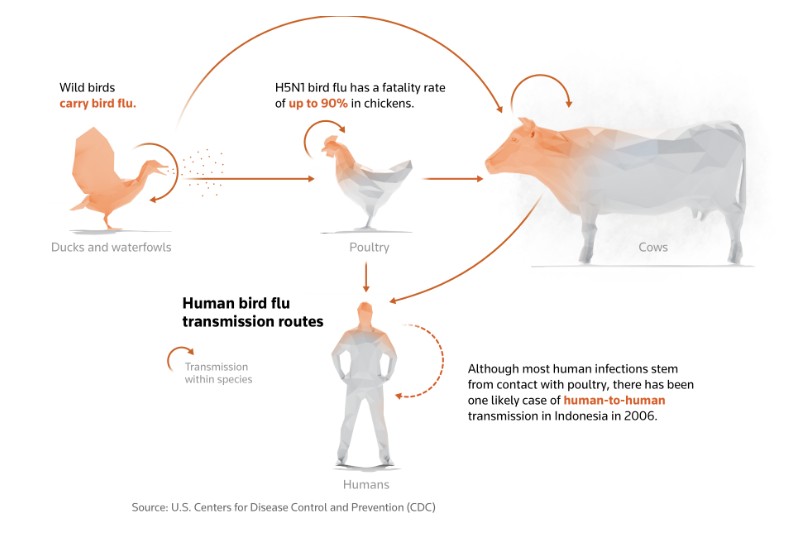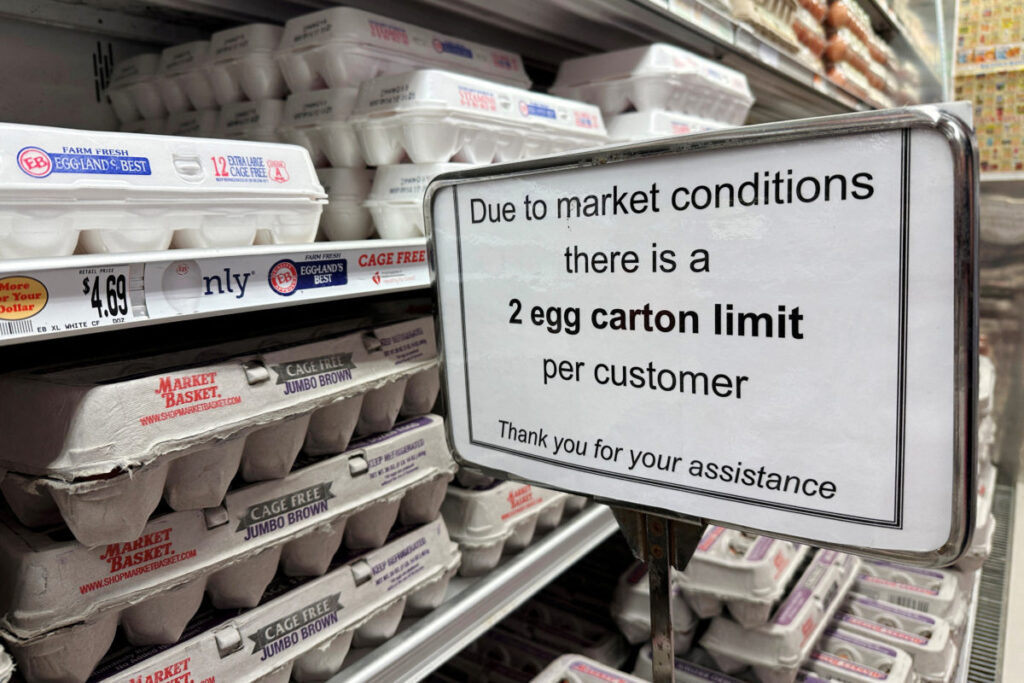Bird flu is a concern for farmers and consumers alike. Highly pathogenic avian influenza (HPAI) can spread rapidly among chickens, but most people won’t notice its side effects until they visit a supermarket. That’s where consumers encounter the high price of eggs, a once-inexpensive commodity that now averages $4.95 a dozen in the U.S.
What Causes Bird Flu?
Bird flu is caused by influenza viruses that primarily infect birds, especially wild waterfowl like ducks and geese. These wild birds often carry the virus without showing symptoms and then spread it as they migrate. When chickens contact infected wild birds or their droppings outdoors, bird flu can spread rapidly. Transmission can also occur from contaminated processing equipment.
There are several forms of HPAI, as bird flu is officially known, and they are all highly contagious among birds. Human infections are rare, however, and the U.S. Centers for Disease Control (CDC) says that the risk to the general public is low. Some farm workers have become ill from H5N1, a specific version of HPAI that can also affect dairy cows.
The Impact on Egg Prices
In the United States, both the U.S. Department of Agriculture (USDA) and state regulatory agencies have culled, or killed, millions of chickens in the hope of stopping bird flu’s spread. These substantial reductions in the number of hens has constricted the egg supply and led to significant price increases for consumers.
At the same time, farmers face additional costs that range from enhanced sanitation to buying more protective gear for workers. While it’s true that the USDA compensates farmers for their culled herds, these payments are often at below market value. Moreover, the USDA does not offer indemnity for income or production losses during downtime, when farmers lack egg-laying hens.

